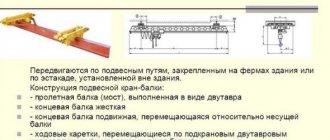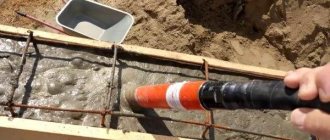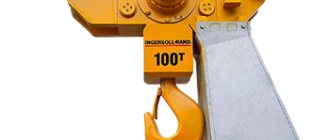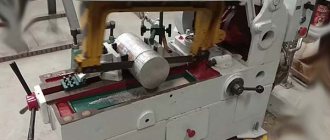An overhead crane is a crane with a load-handling device suspended from a load trolley or hoist that moves along a movable steel structure (bridge). Thanks to its design, an overhead crane can move a load to any point in the working area limited by the lengths of the crane and span beams.
An overhead crane can be divided into two main groups of elements: mechanical components and electrical equipment , which allows you to control the operation of the crane.
Main components of overhead cranes
The design of an overhead crane is relatively simple. The design includes several main components and auxiliary crane equipment. The main elements that make up an overhead crane are the bridge (span) and end beams. The bridge is bolted to the end beams. The overhead crane moves along the crane tracks along the loading platform.
Superstructure (bridge)
It consists of one or two beams, which, depending on the technical requirements and operating conditions of the crane, are made of a round, box-shaped section or from an I-beam reinforced with pipes.
Bridge cranes with a bridge consisting of one girder (single girder) are lighter and are usually used in enclosed spaces for loads up to 20 tons.
Double Girder Cranes
heavier and designed to handle loads weighing up to 100 tons. The span length can reach 60 meters.
End beams
They are a support for the span. Due to the installed running wheels, the overhead crane moves along the crane track. Based on the type of fastening, support and suspended end beams are divided.
In the support type, the wheels of the end beams in the upper part rest on the crane tracks. In suspended ones, the fastening is made to the lower flange of the I-beam.
End beams are made of box section or from channels using welding. The material used is high-strength alloy steel. The structure can be strengthened with special stiffening ribs.
Support overhead crane
Overhead overhead crane
The mechanism for moving the load is a movable worm hoist.
The main technical characteristic for this type of equipment is the span. The overhead crane is controlled from the tower cabin. Under certain conditions, it can also be carried out using a remote control panel of the dispatcher. It is worth noting that to increase the level of worker safety, the speed of movement of the trolley and bridge of most cranes of this type is significantly reduced. If there is a large amount of harmful impurities in the air in a production workshop, then it is controlled exclusively in remote mode.
The most common crane lift in modern production is a crane-beam type equipment.
Equipment for overhead cranes
Depending on the assigned tasks and operating conditions, overhead cranes are equipped with devices that operate from manual or electric traction. Hand-pulled control is typically provided by a drive chain through the physical efforts of the crane operator. Such cranes are used for infrequent movements of loads weighing up to 10 tons.
Electric overhead cranes are equipped with modern electric drives, which facilitate the operation of heavy overhead cranes and ensure the movement of heavy loads weighing up to 50 tons or more. Next, we will look at the basic mechanisms of overhead cranes that ensure their movement, safety, gripping and lifting of loads.
Motors (geared motors)
, installed on the end beams of electric overhead cranes, are part of the mechanism for moving the crane along the crane tracks. Torque is transmitted from the engine through the gearbox to the running wheels of the end beams, and accordingly, movement is carried out along the rails.
Crane trolleys
installed on double-girder overhead cranes to allow installation and movement along the span of the lifting device. Made in the form of a welded frame with running wheels. They are also equipped with gear motors for movement along the span. Some overhead crane designs are equipped with two load trolleys for moving large and heavy loads.
Brakes
are an important element of electric overhead cranes when moving large loads. The accuracy of crane positioning during work depends on the quality and condition of the brake system. In most cases, a shoe or disc-shoe braking system is used for overhead cranes. All gear motors installed on the crane are equipped with brakes.
Cabins
installed on overhead cranes to ensure control of the process of moving goods. For low lifting heights (up to 22 m), a stationary cabin is usually installed at one end of the crane bridge. At higher heights, it is recommended to install a mobile cabin to provide better visibility during work. Depending on the location of operation of the overhead crane (outdoors or indoors), closed or open type cabins are provided.
Lifting mechanisms
are installed on overhead cranes to ensure lifting, lowering and moving loads along the span. Due to their reliability and efficiency, the most popular in use are manual hoists and electric hoists. These devices are characterized by the fact that to increase the strength and speed of lifting loads, as well as holding the load at a height, they use a special system - a chain hoist. The system consists of several blocks (movable and fixed) connected by a rope or chain. Thus, hoists are classified into chain and rope. And depending on the mobility along the bridge - stationary and mobile.
To equip overhead cranes with increased lifting capacity, electric winches of an expanded configuration are often used.
Load-handling devices are installed on cranes depending on the characteristics of the cargo (chemical composition, physical state, dimensions, etc.) These include hooks, grabs, electromagnets and staples.
- Grabs are necessary for capturing loose, fibrous materials, shavings and long lumber.
- Hooks are used for hanging loads. They are equipped with safety elements that prevent the load from falling out.
- Staples are used when reloading rolled metal products. They come in different sizes and have minimal weight.
- Electromagnets are used for remote gripping of cast iron and steel loads.
- In situations that require greater precision in operation, for example, in overhead crane structures for the metallurgical industry and when stacking cargo, a rigid suspension is used.
On a note
In the production and assembly of overhead cranes, we use high-quality materials and reliable components. As lifting devices we offer installation of electric hoists made in Bulgaria
or
Russian
production. The reliability, durability, and maintainability of these devices have been tested by time. Our specialists will help you choose the most optimal modification of the hoist in terms of price-quality ratio.
Basic systems
The mechanics of a crane presupposes the presence of three basic systems with the help of which all movements of lifting equipment are possible - these are winches, blocks and pulleys. They allow you to:
- Rotate and move the tower;
- Raising and lowering the boom in the vertical direction;
- Changing the horizontal reach or moving the cargo cart.
To capture the load, a hook clip fixed to a steel cable is used. The cable moves due to the operation of the winch through a block on the cargo trolley, providing lifting to the desired height. The winch is also responsible for moving the trolley itself. The rotation of the structure is carried out due to the rotary support device, which transfers overturning loads and vertical loads to the fixed part of the frame.
Additional equipment: safety and efficiency of overhead cranes
Equipping an overhead crane with additional electronic and mechanical devices significantly increases the operating efficiency of the equipment, the safety of work, improves controllability, and also helps prevent rapid wear of components and mechanisms.
- Crane scales are necessary to determine the exact weight of cargo during loading and unloading operations. Attached to the load-handling mechanism.
- Load limiters - prevent equipment from being overloaded. Installed on the rope of the lifting mechanism. Lifting of loads is switched off if their permissible weight is exceeded.
- Radio control and floor control are alternative options for operating the crane from the cab. Installation of radio control (control from the floor) ensures safe work, greater visibility for the operator, and more accurate positioning of the load. Transferring an overhead crane from control from the cabin to control from the floor provides a number of financial advantages, such as savings on personnel, savings on mandatory certification of crane operators, and savings on industrial safety expertise.
- Frequency converters are connected to motors to ensure smoother running of overhead crane units, avoid jerking and excessive swinging of loads, and prevent overloads in the operation of electric motors. This increases engine life and reduces equipment repair and maintenance costs.
Our production
Double-beam bridge support cranes, TU 3151-010-60609109-2009
Characteristics:
- load capacity from 5 to 32 tons
- span from 10.5 to 34.5 meters
- control from the floor, from the cab
- auxiliary lift
Characteristics:
- load capacity from 10 to 20 tons
- span from 10.5 to 34.5 meters
Characteristics:
- load capacity from 5 to 10 tons
- span from 10.5 to 34.5 meters
General purpose cranes
Installation. Double-girder overhead crane, span 22.5 meters. Operating mode A7. Load capacity 50/12.5 tons. On the electronic control system of Dvesta.
We present to your attention:
- Crane 16 (TU 24.09.404-83)
- Crane 16/3.2 (TU 24.09.404-83)
- Crane 32/5-A5 (TU 24.09.404-83)
- Crane UP20/5-A2 (TU 24.09.404-83)
- Crane 32/5-A5 (TU 24.09.404-83)
- Crane 20/5-A5 (TU 24.09.404-83)
- Crane 16/3.2-A5 (TU 24.09.404-83)
- Crane 16-A7 (TU 24.09.656-86)
- Crane 16/3.2-A7 (TU 24.09.656-86)
- Crane 20/5-A7 (TU 24.09.656-86)
- Crane 32/5-A7 (TU 24.09.656-86)
- Crane 5 t (TU 24.09.404-83)
- Crane 10 t (TU 24.09.404-83)
- Crane 10 controlled from the floor (TU 24.09.404-83)
- Crane 5 t controlled from the floor (TU 24.09.404-83)
- Crane 5 t (TU 24.09.656-86)
- Crane 10 t (TU 24.09.656-86)
- Crane 50/10 (TU 24.09.404-83)
- Crane 5–A7 for moving molten metal
- Crane 50/10 (TU 24.09.656-86)
Special purpose cranes
Tests. Double-girder overhead crane, span 22.5 meters. Operating mode A7. Load capacity 50/12.5 tons. On the electronic control system of Dvesta.
We present to your attention:
- Crane 16-A6 for moving molten metal (TU 24.09.404-83)
- Crane 16/3.2-A6 for moving molten metal (TU 24.09.404-83)
- Crane 20/5-A6 for moving molten metal (TU 24.09.404-83)
- Crane 32/5-A6 for moving molten metal (TU 24.09.404-83)
- Crane MT20-A2 (TU 21.006.-84)
- Crane G10-A7 (TU24.09.691-88)
- Overhead crane MG10/10-A7 (TU24.09.691-91)
- Crane MG16/3.2-A6 (TU 24.09.691-91)
- Crane MG20/5-A7 (TU 24.09.691-91)
- Magnetic valve (TU 24.09.691-91)
- Crane with flexible traverse suspension (TU 24.09.691-91)
- Crane 10-A7-VT (TU 24.09.691-91)
- Crane K16-A6 (TU 24.09.691-91)
- Magnetic crane with flexible traverse suspension (TU 24.09.691-91)
- Crane 10×2t
- Crane G5-A7 (TU24.09.691-91)
- Crane G16-A7 (TU24.09.691-91)
- Crane 10-A7 for moving molten metal
- Crane MM16/10-A6
Explosion-proof taps
We present to your attention:
- Crane UPVB 32/5-A2 (TU 24.09.557-81)
- Crane UPVB 20/5-A2 (TU 24.09.557-81)
- Crane VB 16-A2 (TU 24.09.557-81)
- Crane UPVB 16/3.2-A2 (TU 24.09.557-81)
- Crane VB 16/3.2-A2 (TU 24.09.557-81)
- Crane UPVB 16-A2 (TU 24.09.557-81)
- Crane VB 32/5-A2 (TU 24.09.557-81)
- Crane VB 20/5-A2 (TU 24.09.557-81)
- Crane UPVB 10-A2 (TU 24.09.557-81)
This is interesting: Features and types of grab cranes: in detail











